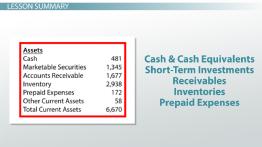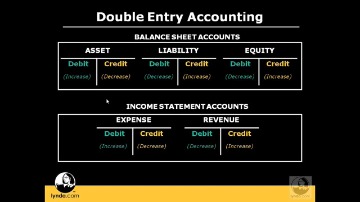
If a mutual fund has significantly outperformed other funds with a similar investment strategy, it might be viewed as a more competent choice. For instance, a business in the software sector could set an industry benchmark for profit margins. The accounting industry tends to talk in terms of utilization and realization. Utilization is the hours an employee bills divided by their total number of available workable hours. For example, an employee who bills 1,600 hours out of 2,000 hours is 80% utilized.
Create Your Own Benchmarking Process in 4 Steps (Or Just 2 with Databox)
The Bench platform gives you monthly financial statements and expense overviews to keep you in control of your money. At-a-glance visual reports help you see the big picture and give you actionable insights to help you grow your business. Benchmark https://www.quickbooks-payroll.org/ reports and features from certain tools you are already using are helpful to some extent, but they don’t eliminate the major part of the process. Then, also analyze your competitor’s data and find out whether there are any performance gaps.
Benchmarking 101: Definition, Types, Benefits and How to Use Them
For General Accounting, the company was performing at almost 50% above the Median performer, but there are still opportunities to drive additional performance improvements in this function as well. Typically you can gain at least 20-30% efficiencies (lower headcount) through centralization and automation initiatives. Based on the numbers, AP and AR should provide those opportunities and Accounting should offer some improvements as well. Benchmarking is the process of comparing a firm’s performance criteria and business processes to other businesses within their trade.
Trusted by 25,000+ American small business owners
Comparing the pre and post-optimized organizations to benchmark data, the company would now be operating at about 30% better than the Median performer, and approaching Top performer level. Reviewing the AP related benchmark data, the company was performing at approximately 25% below the Median performer. For the specific AR benchmark that we considered, the company was performing at 85% below the Bottom performer. This clearly indicates that there are opportunities for automation and performance improvement to drive efficiencies resulting in lower headcount. It is assumed that higher revenue companies will have a larger number of transactions, necessitating more people to manage them. Additionally, certain industries typically have more complex transaction types, again necessitating more people to perform these tasks.
- Benchmarks are not static; they should be reviewed and updated regularly to maintain relevance.
- You’ll fill out an application with your information, and you’ll be able to open an account as soon as you pass a credit check.
- An over-reliance on certain data indicators or on historical performance data can also lead to distorted results.
Working the math, we would need to identify opportunities to reduce about 13 FTE’s to achieve the $1M annual cost savings, or 20% of the total staff. When setting your financial benchmark, consider industry standards and your past performance. For an accurate comparison, it’s crucial to ensure the benchmark you set is relevant to your industry and fits your business size.
Customer Helpdesk

When it comes to external benchmarking, you’re setting your reference point outside of your organization. External benchmarks are used to compare the performance against other companies that are similar to yours in some way. They’re usually competitors or peers but could have other factors in common.

The company had F&A teams located at all of its manufacturing plants, focusing on localized financial operations, with specific (and unique) regulatory requirements for each country. In recently working with a $500M CPG organization, we determined that the company’s closing cycle was 50% longer than its BOTTOM-PERFORMING peers. Benchmarking is most often an on-going process in which companies continuously seek to improve their practices. Most commonly, benchmarking is used to evaluate an organization’s performance by focusing on one or more particular indicators. Company Q will study Corporation J’s performance and procedures in depth and will identify the differences between the organizations.
Refers to the comparison of investment to set industry standards, from an investor perspective. The goal is to get actionable insights that will help you decide whether to hold the investment, sell it, or invest even more money. For example, this can involve checking how the performance of a specific stock benchmark compares to others on the market, in the same niche. Process https://www.adprun.net/a-look-at-the-cash-conversion-cycle/ benchmarking involves comparing processes across internal company departments or across different companies in the industry. If you’re analyzing your competitors, you might even find some new types of processes that you can start implementing. Functional benchmarking compares internal functions and processes with those of external best practices or industry standards.
So many companies focus solely on finding areas that they need to improve that they overlook some of the great results they’ve been having. If you have the proper data set, you can benchmark pretty much any metric you want since all data points can be recorded. Here’s another example, one in which the company’s median value is below the standard. Here’s a visual representation of a benchmark where a company outperforms its cohort (the median values are above the group standard). If we go a bit further down this rabbit hole, we can segment business benchmarks by different departments. Although we aren’t really examining each other’s armies per se, we do look at what our business competitors are doing and analyze their performance.
If there are, you can then try to pinpoint the strategies that they use to create those gaps. Make sure to analyze the data coming from your company objectively, even if it’s not always up to par (don’t worry, no organization is perfect). Just in case, always double-check whether the data you collected is accurate, relevant, and reliable.

By comparison, during the peak of the dot-com bubble in 2000, Nasdaq 100 stocks traded at an absurd trailing P/E of 200, more than six times today’s level. Cisco, a poster child of the dot-com era, was valued at a multiple of more than 150 times forward earnings when the stock hit its peak in March 2000. In this context, neither Nvidia nor the accounting information system ais definition broader market are near the valuation levels seen during the internet bubble. However, Nvidia’s recent earnings and sales multiple expansion suggests a disconnect between the share price and performance of the underlying business. AI stocks have spiked, and valuations have stretched, but at least some fundamental support is behind the craze.